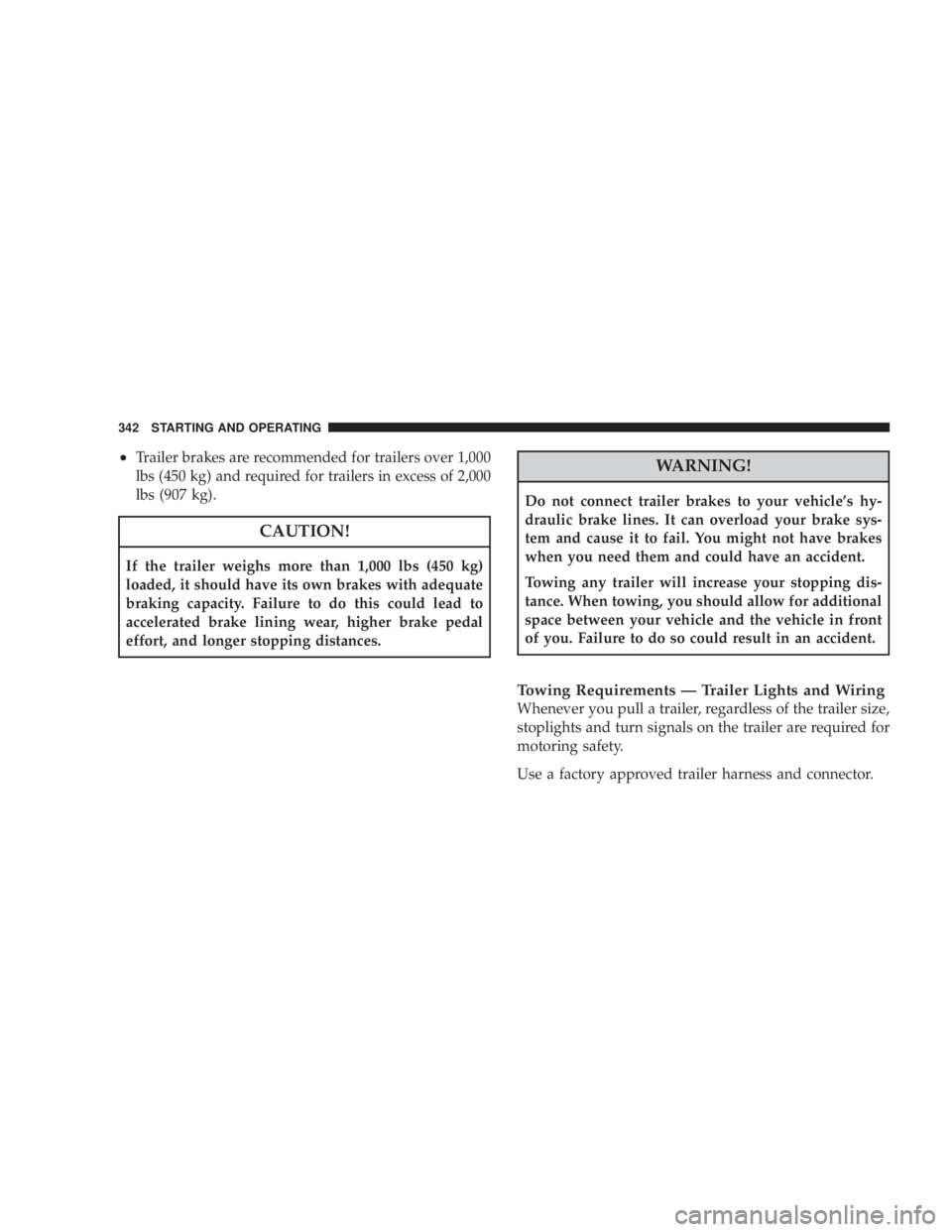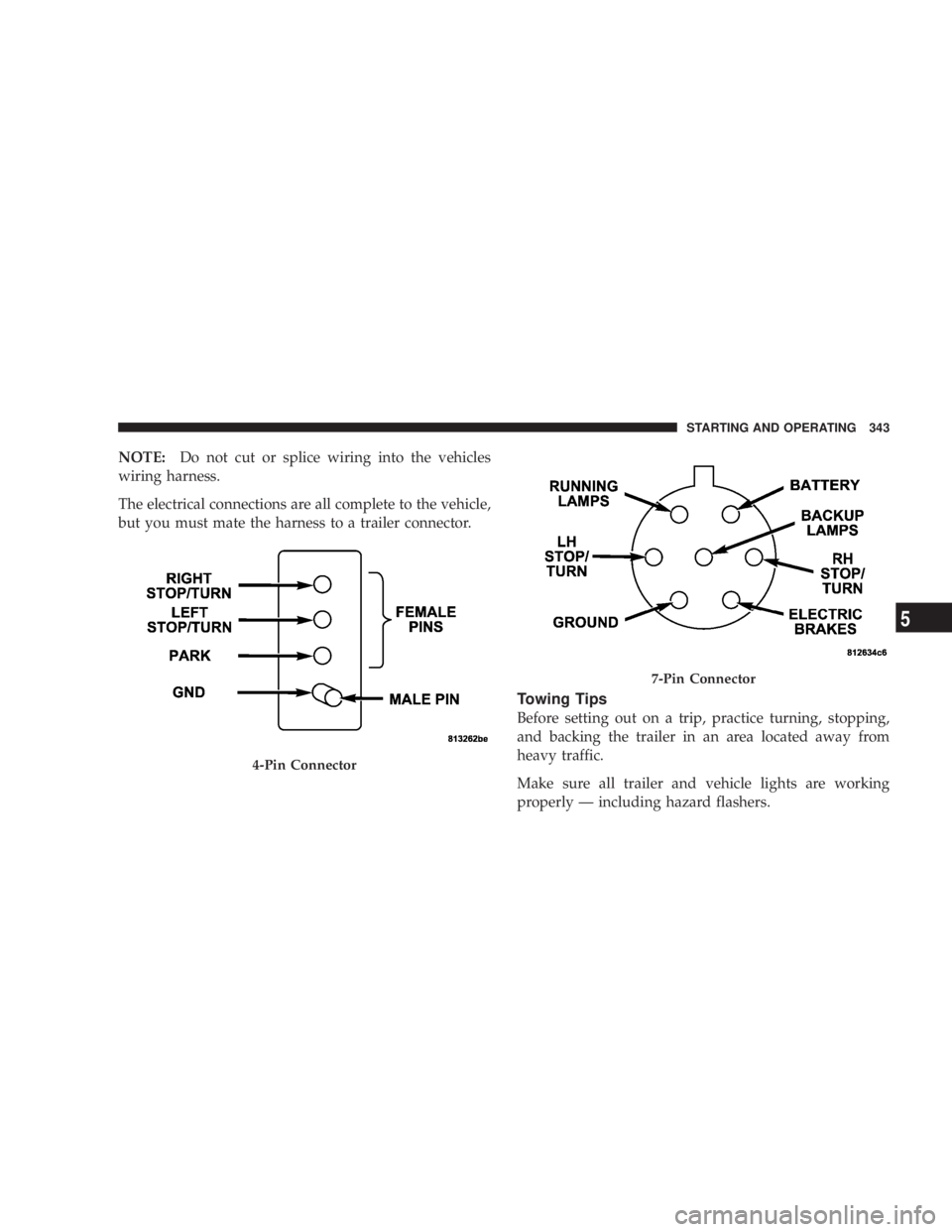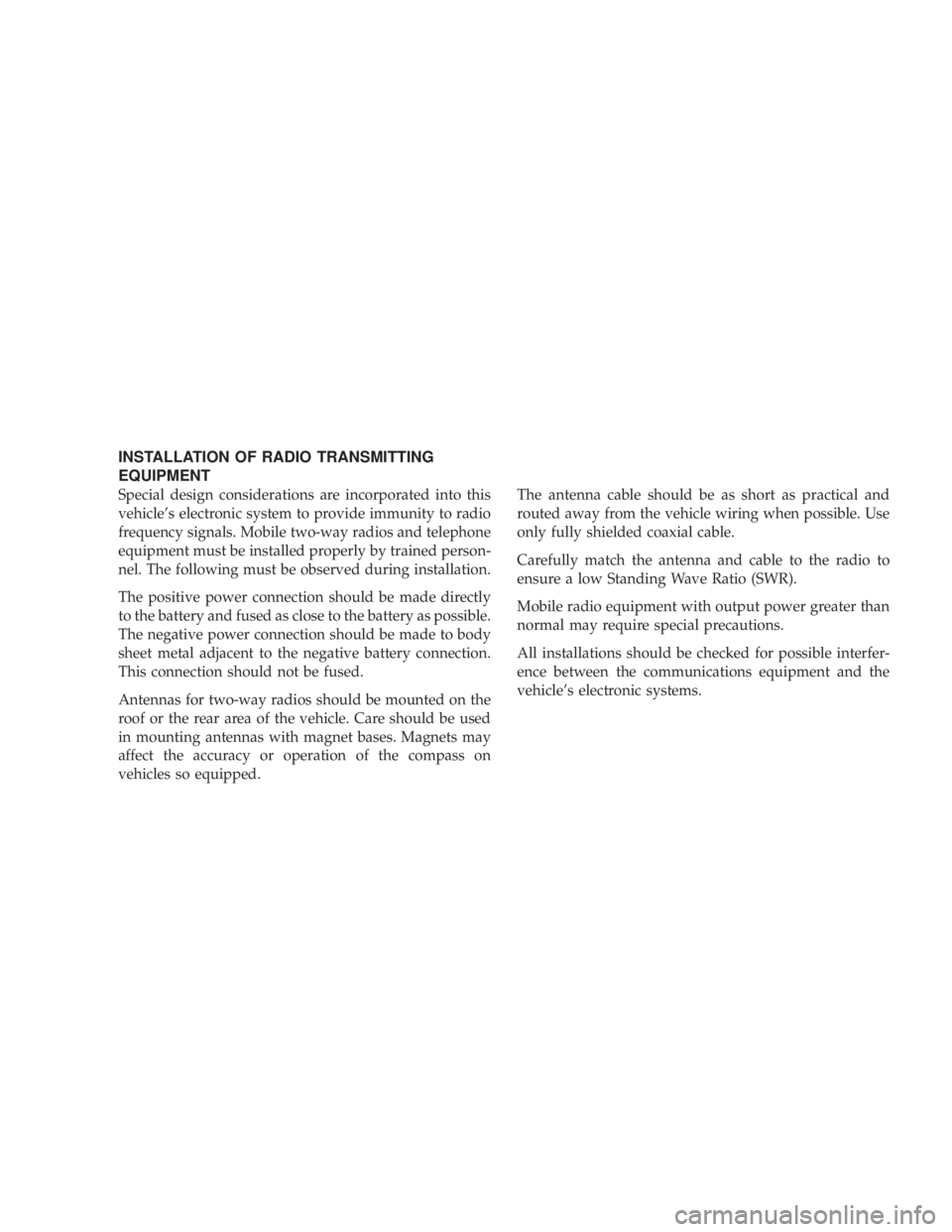wiring DODGE AVENGER 2008 Owners Manual
[x] Cancel search | Manufacturer: DODGE, Model Year: 2008, Model line: AVENGER, Model: DODGE AVENGER 2008Pages: 467, PDF Size: 7.16 MB
Page 66 of 467

Maintaining Your Airbag System
WARNING!² Modifications to any part of the airbag system
could cause it to fail when you need it. You could
be injured if the airbag system is not there to
protect you. Do not modify the components or
wiring, including adding any kind of badges or
stickers to the steering wheel hub trim cover or the
upper right side of the instrument panel. Do not
modify the front bumper, vehicle body structure,
or add aftermarket side steps or running boards.
² It is dangerous to try to repair any part of the
airbag system yourself. Be sure to tell anyone who
works on your vehicle that it has an airbag system. NOTE:
Perchlorate Material Ð special handling may ap-
ply. See www.dtsc.ca.gov/hazardouswaste/perchlorate
WARNING!Do not attempt to modify any part of your advanced
airbag system. The airbag may inflate accidentally or
may not function properly if modifications are made.
Take your vehicle to an authorized dealer for any
advanced airbag system service. If your seat includ-
ing your trim cover and cushion needs to be serviced
in any way (including removal or loosening/
tightening of seat attachment bolts), take the vehicle
to your authorized dealer. Only manufacturer ap-
proved seat accessories may be used. If it is necessary
to modify an advanced airbag system for persons
with disabilities, contact your authorized dealer.64 THINGS TO KNOW BEFORE STARTING YOUR VEHICLE
Page 344 of 467

² Trailer brakes are recommended for trailers over 1,000
lbs (450 kg) and required for trailers in excess of 2,000
lbs (907 kg).
CAUTION!If the trailer weighs more than 1,000 lbs (450 kg)
loaded, it should have its own brakes with adequate
braking capacity. Failure to do this could lead to
accelerated brake lining wear, higher brake pedal
effort, and longer stopping distances. WARNING!Do not connect trailer brakes to your vehicle's hy-
draulic brake lines. It can overload your brake sys-
tem and cause it to fail. You might not have brakes
when you need them and could have an accident.
Towing any trailer will increase your stopping dis-
tance. When towing, you should allow for additional
space between your vehicle and the vehicle in front
of you. Failure to do so could result in an accident.
Towing Requirements Ð Trailer Lights and Wiring
Whenever you pull a trailer, regardless of the trailer size,
stoplights and turn signals on the trailer are required for
motoring safety.
Use a factory approved trailer harness and connector.342 STARTING AND OPERATING
Page 345 of 467

NOTE: Do not cut or splice wiring into the vehicles
wiring harness.
The electrical connections are all complete to the vehicle,
but you must mate the harness to a trailer connector.
Towing Tips
Before setting out on a trip, practice turning, stopping,
and backing the trailer in an area located away from
heavy traffic.
Make sure all trailer and vehicle lights are working
properly Ð including hazard flashers.4-Pin Connector 7-Pin Connector STARTING AND OPERATING 343
5
Page 463 of 467

Recreational ....................... 345,363
Weight .............................. 337
Towing Assistance ....................... 102
Traction .............................. 288
Trailer Towing .......................... 334
Cooling System Tips .................... 344
Hitches ............................. 336
Minimum Requirements ................. 339
Trailer and Tongue Weight ................ 338
Wiring .............................. 342
Trailer Towing Guide ..................... 337
Trailer Weight .......................... 337
Transaxle ............................. 267
Additives ............................ 399
Automatic .................... 12,261,267,397
Autostick ............................ 274
Filter ............................... 399
Maintenance .......................... 397
Operation ........................... 267 Overdrive ......................... 271,272
Selection of Lubricant ................... 424
Transmission
Range Indicator ....................... 172
Transmitter Battery Service
(Remote Keyless Entry) .................... 26
Transmitter, Garage Door Opener (HomeLink t ) . . 143
Transmitter Programming
(Remote Keyless Entry) .................... 26
Transporting Pets ........................ 77
Tread Wear Indicators .................... 306
Trip Odometer .......................... 172
Trip Odometer Reset Button ................ 174
Trunk Release, Emergency ................ 39,40
Trunk Release Remote Control ............... 39
Turn Signals ...................... 133,176,416
UCI Connector ......................... 227
UConnectŸ (Hands-Free Phone) ........... 89,223 INDEX 461
10
Page 466 of 467

INSTALLATION OF RADIO TRANSMITTING
EQUIPMENT
Special design considerations are incorporated into this
vehicle's electronic system to provide immunity to radio
frequency signals. Mobile two-way radios and telephone
equipment must be installed properly by trained person-
nel. The following must be observed during installation.
The positive power connection should be made directly
to the battery and fused as close to the battery as possible.
The negative power connection should be made to body
sheet metal adjacent to the negative battery connection.
This connection should not be fused.
Antennas for two-way radios should be mounted on the
roof or the rear area of the vehicle. Care should be used
in mounting antennas with magnet bases. Magnets may
affect the accuracy or operation of the compass on
vehicles so equipped. The antenna cable should be as short as practical and
routed away from the vehicle wiring when possible. Use
only fully shielded coaxial cable.
Carefully match the antenna and cable to the radio to
ensure a low Standing Wave Ratio (SWR).
Mobile radio equipment with output power greater than
normal may require special precautions.
All installations should be checked for possible interfer-
ence between the communications equipment and the
vehicle's electronic systems.